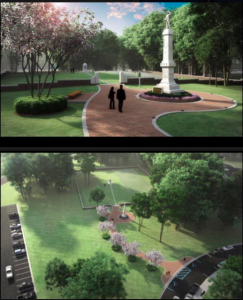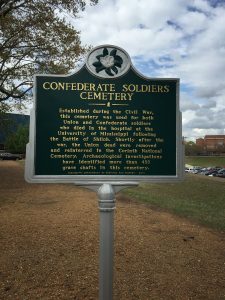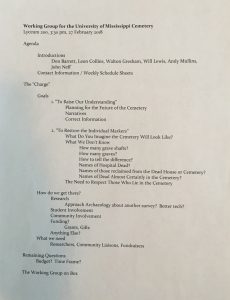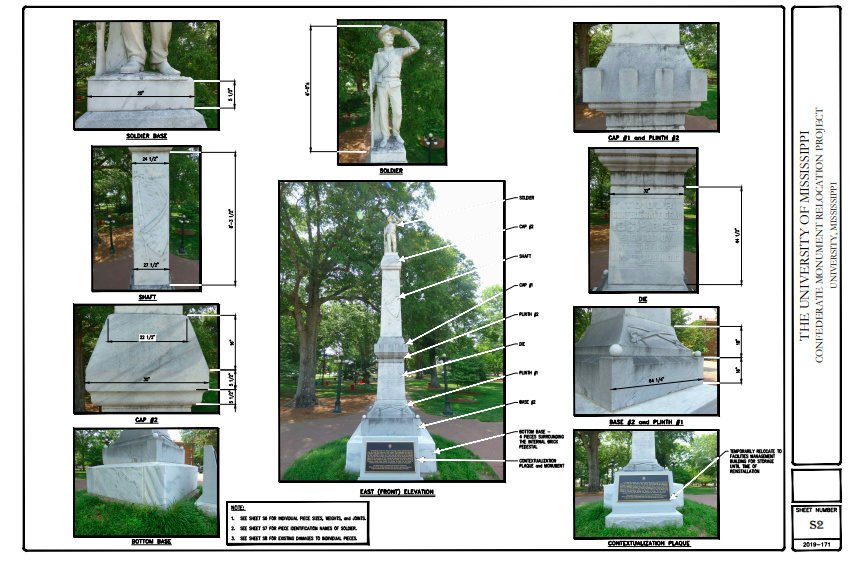OXFORD, Miss.—The University of Mississippi will temporarily cease the collection of private funding to renovate its Confederate cemetery where the campus rebel-soldier statue is due to be relocated, a source close to the fundraising effort told the Mississippi Free Press today. This decision comes in the wake of potential donors’ concerns that the proposed relocation plans will further glorify the Confederacy, the source said.

A lack of transparency has thus far plagued the relocation efforts, which the Mississippi Institutions of Higher Learning approved on June 18, 2020. In an interview with the Mississippi Free Press Monday, the source elaborated on the dynamics of what has come to be known as the “Cemetery Committee,” or more officially the Working Group for the University of Mississippi Cemetery. The group of academics and UM alumni formed in early 2018, and its remaining members are believed to have developed the renovation plan that a loud chorus of critics, from UM students to history professors, say would glorify the Confederate monument on campus and create a shrine of sorts in the cemetery behind the “Tad Pad,” the nickname of the Tad Smith Coliseum.
The following members originally comprised the Cemetery Committee: Dr. John Neff, a UM history professor who died in January; Don Barrett, Leon Collins, Walton Gresham, Will Lewis and Andy Mullins.
This work group was separate from the Chancellor’s Advisory Committee on History and Context, which dissolved after it completed its final report. Only three of the Cemetery Committee members—Neff, Barrett, and Mullins—were also on the CACHC. There was never a public announcement regarding the establishment of the Cemetery Committee, the source said, but documents show that they met for the first time on Feb. 27, 2018.
Committee Balance of Power Shifted with Death
The late Dr. Neff acted as a counterweight for those committee members advocating for the creation of a more elaborate monument to the Confederacy, the source said. Neff did not share their enthusiasm. In fact, he and colleague Dr. Anne Twitty were urgently seeking the statue’s dedication remarks of the Confederate veteran, Charles Scott, when he died. Twitty found the remarks earlier this month, revealing that they glorified white supremacy and even Confederate veterans’ work during Reconstruction to roll back freedoms of newly freed slaves.
Neff’s passing shifted the balance of power within this work group, which subsequently led to the current plans for the relocation of the Confederate monument on the University of Mississippi campus that went public the day IHL approved the relocation. Those plans include placing headstones in the cemetery as well as the installation of light fixtures to illuminate the monument. This decision to install headstones comes in spite of the fact that it is unknown how many soldiers rest there. All U.S. historians at the University of Mississippi campus signed a letter opposing the Cemetery Committee’s plans, providing it to the Mississippi Free Press yesterday.

“[Neff’s death] left kind of a void there, and the balance of power was in the hands of (Don) Barrett and Will Lewis,” the source said Monday.
Neff’s colleague Twitty was one of the signers of yesterday’s letter, which went into detail about the historians’ concerns including the problem with placing headstones in a cemetery where the graves are unmarked. They are also appalled at placing a statue erected in 1906 to glorify the Confederacy and white supremacy, as Scott’s dedication remarks about preserving “Anglo-Saxon civilization” proved.
The 14 historians wrote in yesterday’s letter: “To glorify the cemetery and the relocated Confederate monument in the ahistorical ways the university has proposed is to build a new Confederate monument in 2020, effectively reenacting the injustice that white supremacists committed when they erected it in 1906. In doing so, the university will create a new destination for neoconfederate and other extremist groups on campus, not only violating its stated values, but also jeopardizing the peace and safety of its students, faculty, and staff.
Giving a Statue a ‘State Funeral’
Don Barrett, a prominent Mississippi attorney, has long supported preservation of American Civil War battlefields. Tax forms list Barrett as a trustee of The American Battlefield Trust, whose mission is to “preserve[s] America’s hallowed battlegrounds and educate[s] the public about what happened there and why it matters.”

In 2010, Barrett gave 100,000 to endow the Harry Owens Civil War Library at the University of Mississippi.
The proposed cost of the monument project has caused outrage among many in the Oxford and University of Mississippi communities, especially because the plans for the cemetery were not publicly known until after IHL voted to relocate the statue there. “They have pulled a fast one here,” the source said Monday. “They pretended to surrender the position of the monument when they are, in fact, putting it in a (more prominent) place.”
“The word started getting around that there were these grandiose plans—expensive plans—to spend over a million dollars to more or less give this statue a state funeral,” the source said.
Potential donors for relocation efforts have been asked to front the costs of this project, but none was included in any conversations about specific details of renovations, including the renderings the University of Mississippi made available last week, the source said.
On Monday, University of Mississippi Chancellor Glenn Boyce admitted that the university community was intentionally denied access to the plans for the monument.
“In the effort to expedite the resubmission of our proposal in order to get the monument relocated before the Fall 2020 semester begins, I did not take the time to share with our community our progress in moving the project forward,” the chancellor wrote in a statement dispersed to students, faculty and staff.
Boyce: ‘This Is Clearly An Error’
Chancellor Boyce also attempted to clarify confusion surrounding the alleged approval UM received from student and faculty constituencies advocating for the relocation of the Confederate monument.

“While those constituencies listed in the submission did approve the plan to relocate the monument to the cemetery, the placement of this statement in the document implies approval of the plan to add headstones to the cemetery, which was not addressed or approved by those groups,” Boyce wrote. “This is clearly an error, and I will clarify this with the Board of Trustees.”
The source made it clear that he supports moving the Confederate statue to the old cemetery, but he is adamantly against it becoming what he is calling a “goddam shrine.”
Besides, the University of Mississippi campus sits across from the Manning Athletics Performance Center, where UM athletes hone their athletic skills. Many of those student athletes are Black and could see that shrine from where they train, the source said.
If the current renderings take effect, the new monument would tower over this area.
“Someone either did not catch that, or did it intentionally, but i would like to think no one did it intentionally,” he said.
Read the MFP’s investigations of the plan to relocate the Confederate statue and enhance the UM cemetery and coverage across the state as efforts to move Confederate statues and memorials grow. See an infographic of Confederate memorials in Mississippi and report missing ones to data@mississippifreepress.com.






